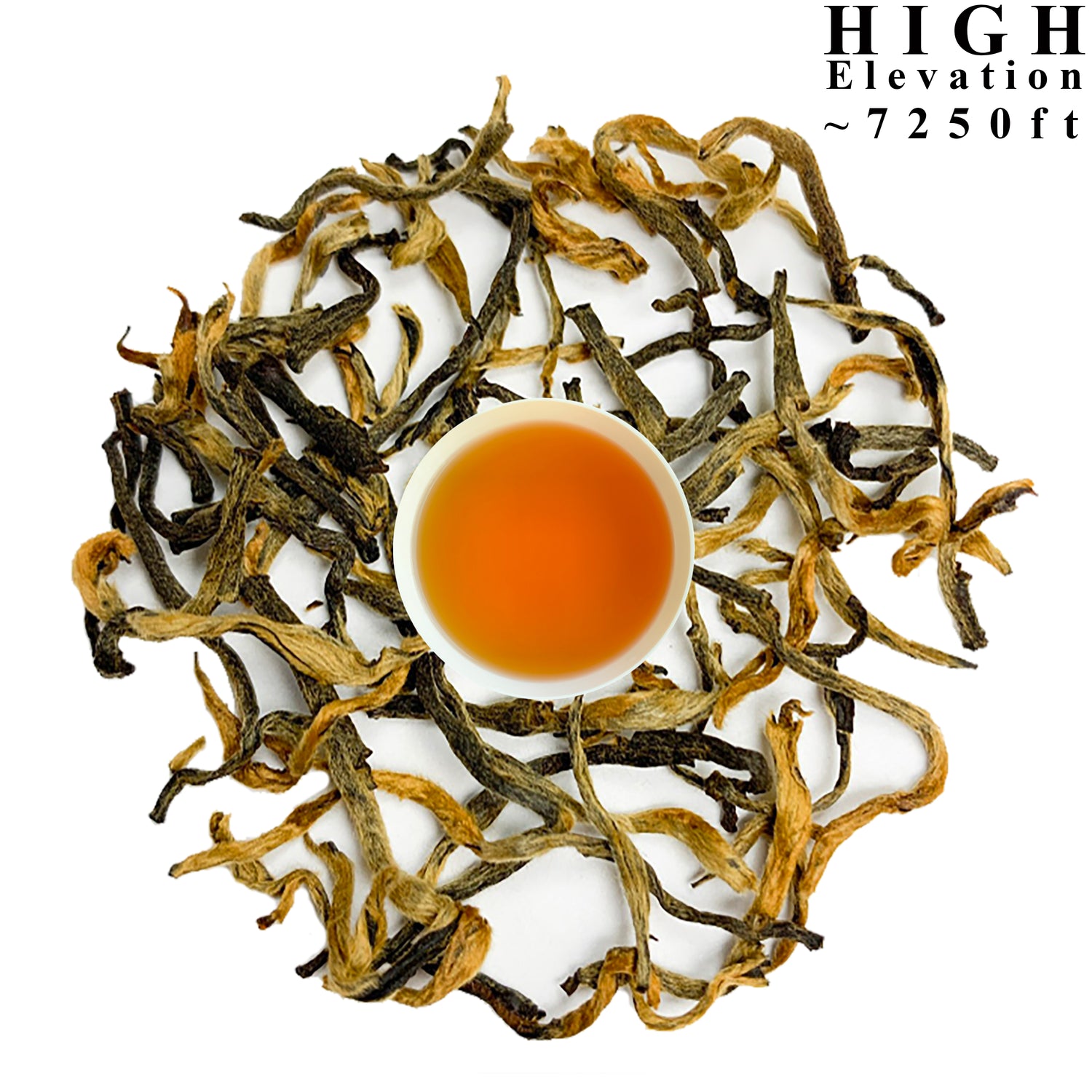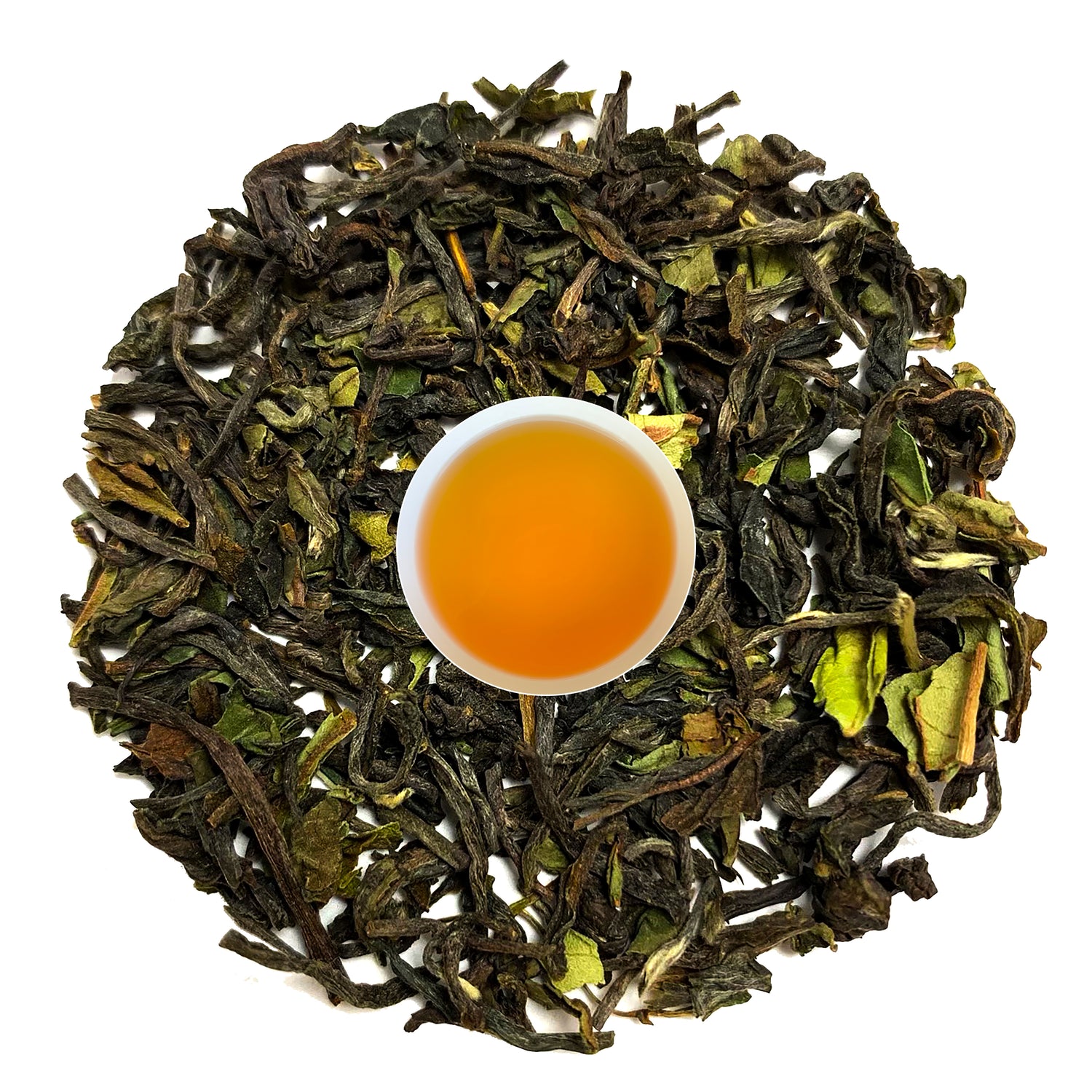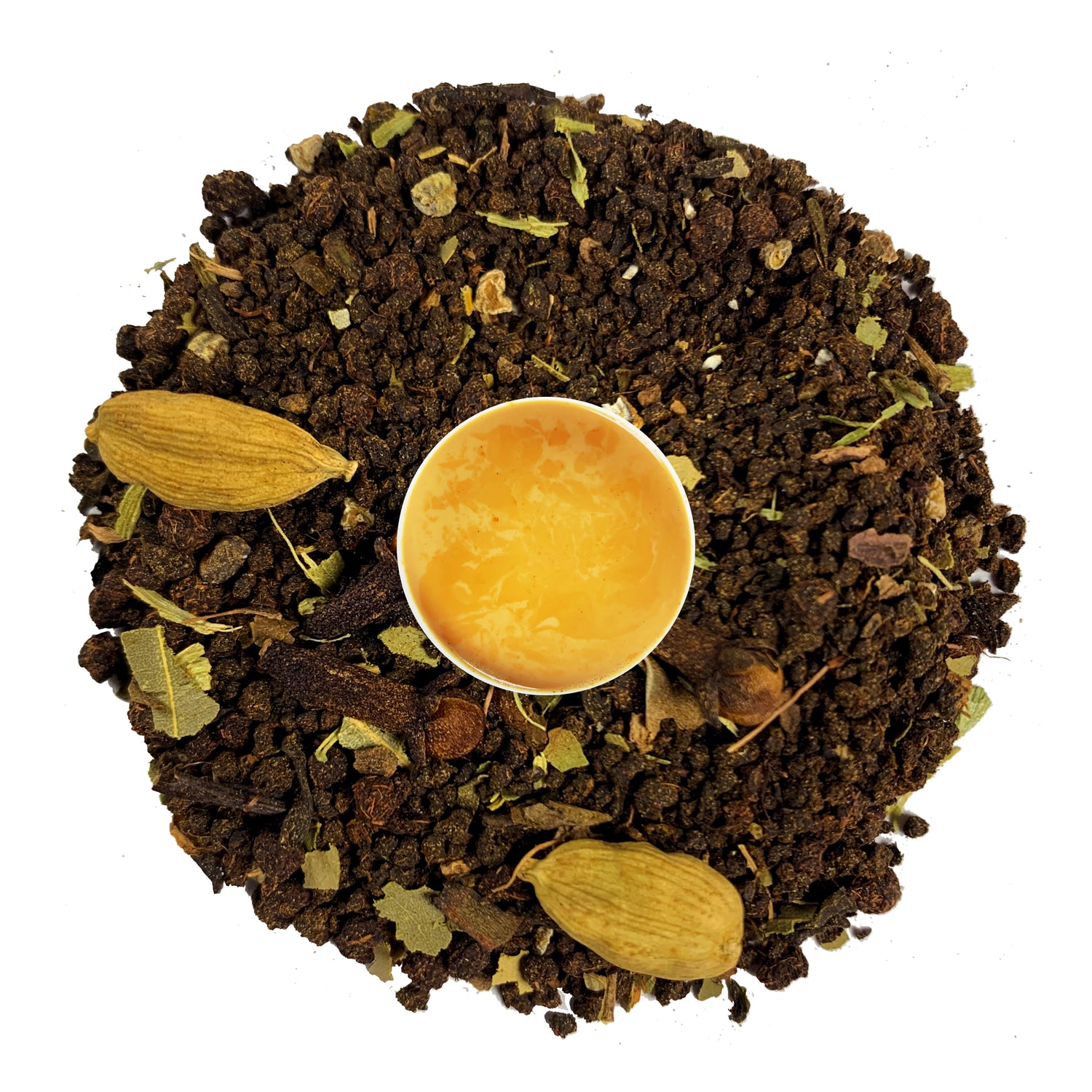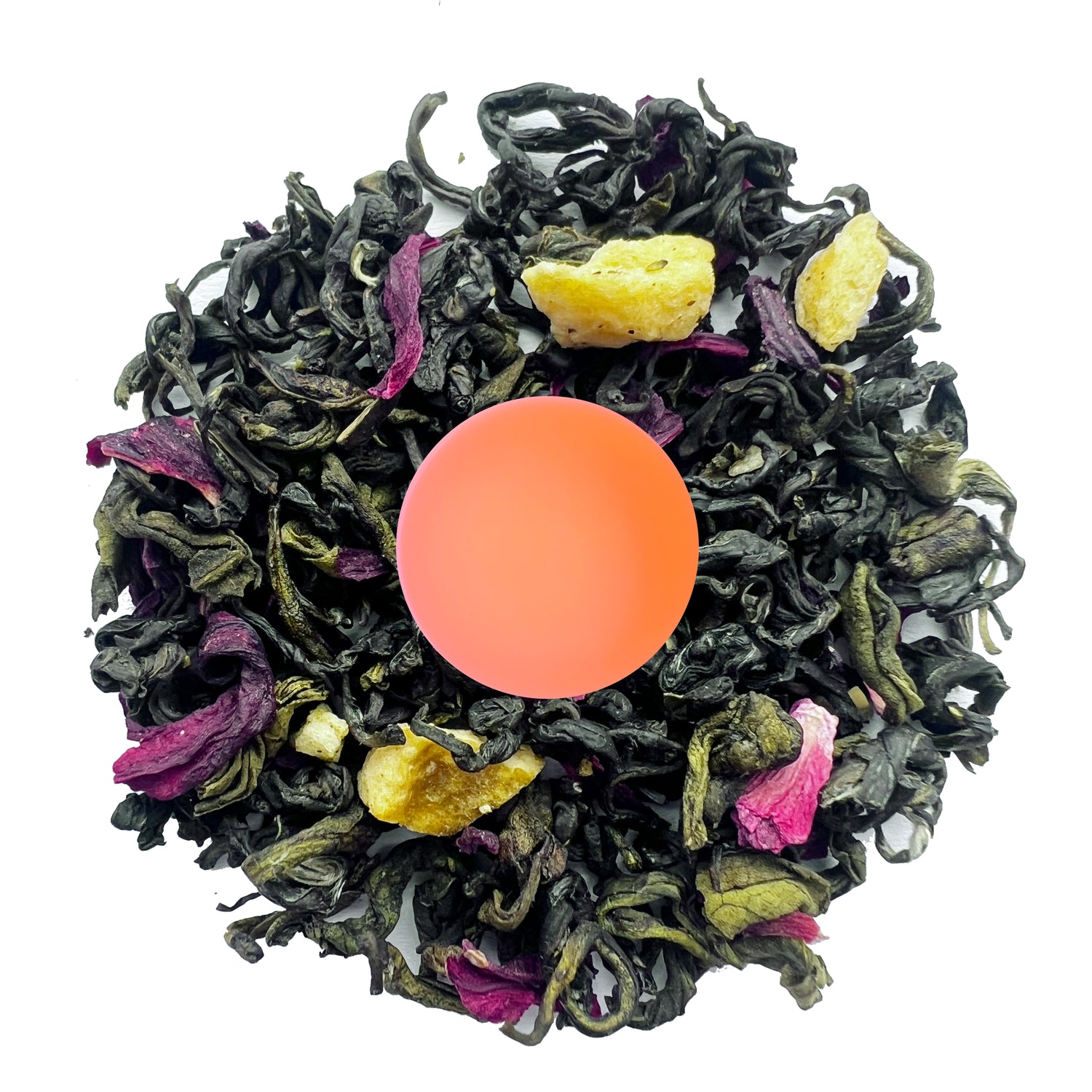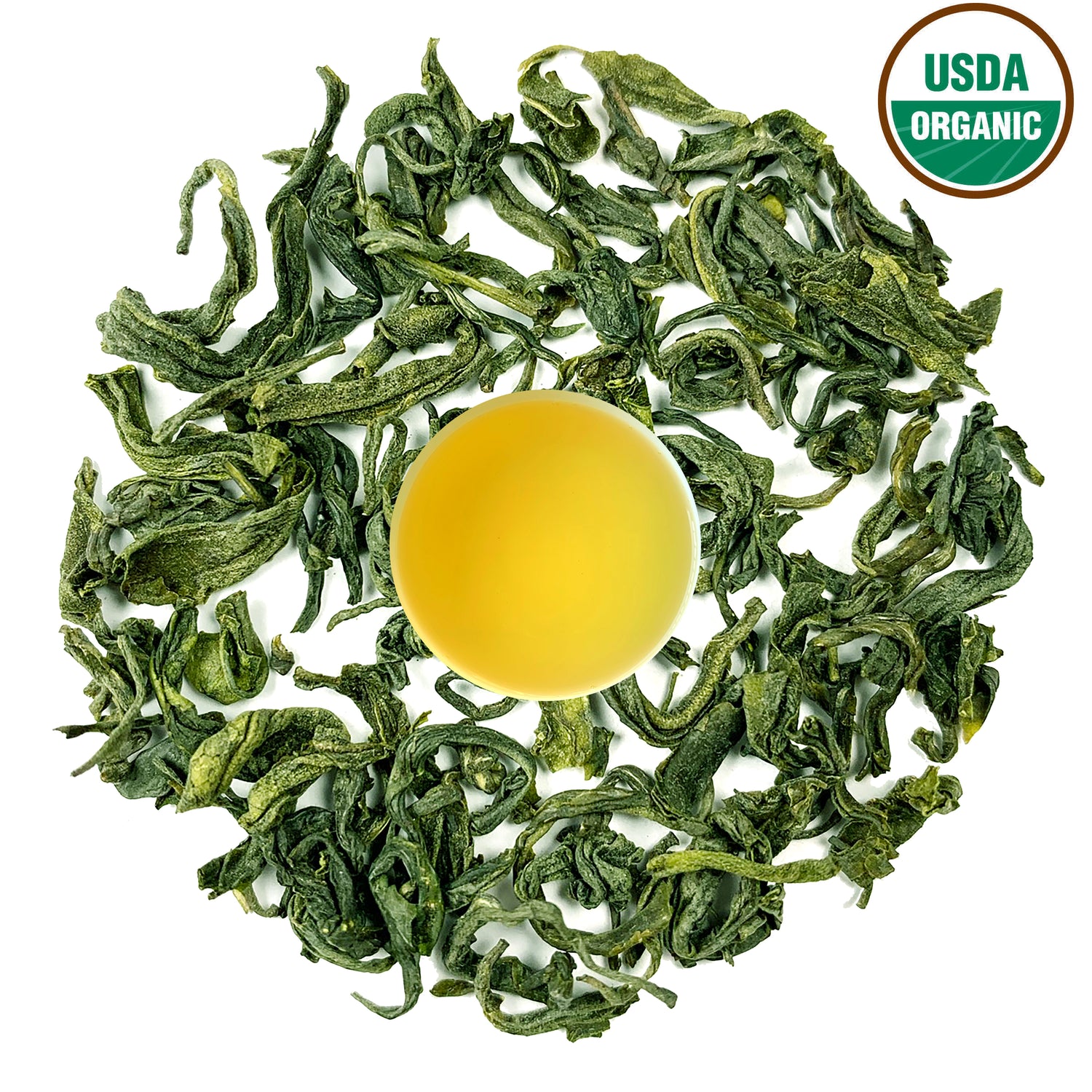
Master the Art of Oolong Tea Steeping
Oolong tea is often misunderstood, leaving many enthusiasts unsure of how to steep it properly. Are you struggling to get the best flavor from your oolong tea? In this guide, readers will uncover the unique characteristics of various oolong tea varieties, learn the right tools needed for steeping, and master essential techniques. By following this advice, tea drinkers will not only enhance their oolong experience but also prevent common mistakes, ensuring they capture the delicate sweetness and complexities of camellia sinensis. Whether using a clay teapot or a porcelain tea set, this article is geared towards helping you brew the perfect cup.
Understand the Unique Characteristics of Oolong Tea Varieties
Understanding the unique characteristics of oolong tea varieties is essential for mastering the art of steeping this delightful beverage. This section will cover the different types of oolong tea leaves, highlight the distinct flavor profiles of various oolong teas, and identify the regions renowned for oolong cultivation. Readers will also gain insights into processing methods that define oolong, discover the health benefits linked to this tea, and see how it compares with darjeeling tea, green, and white tea. With practical tips on using an infuser and measuring with a teaspoon, this knowledge will enhance the oolong experience.
Learn About the Different Types of Oolong Tea Leaves
Oolong tea comes in various types, each offering a unique flavor and aroma profile. The leaves can vary from tightly rolled pearls to broader, loose leaves, with each form influencing the steeping process. Additionally, oolong tea often contains beneficial vitamins that enhance the health benefits, making it a delightful alternative for tea lovers seeking something special compared to other types like earl grey tea or yerba mate. For the best brewing experience, using distilled water in a gaiwan can greatly improve the clarity and taste of the infusion, allowing the distinct characteristics of the oolong to shine through.
Recognize the Flavor Profiles of Various Oolong Teas
Oolong tea offers a variety of flavor profiles that can truly enhance the tea-drinking experience. From floral and fruity notes found in some varieties to the richer, toasty flavors of others, there’s a great deal of diversity within this category. For instance, an organic loose tea sourced from Taiwan might deliver a light, refreshing taste, perfect for serving in a saucer or bowl, while a more oxidized oolong could provide deeper, more complex flavors reminiscent of green tea with a hint of caramel, making it an enjoyable choice for any tea enthusiast.
Identify the Regions Famous for Oolong Tea Cultivation
Oolong tea is primarily cultivated in specific regions known for their ideal growing conditions. In China, areas like Fujian and Guangdong are famous for producing high-quality oolong, where the unique climate influences the taste of the leaves. Taiwan also holds a reputation for its distinct oolong varieties, with tea estates nestled in the mountains, where the altitude contributes to the complex flavors found in the tea brewed from these leaves. Whether using a traditional teapot or a modern tea bag, the origin of the oolong significantly affects not just the flavor but also the overall experience, appealing to both casual drinkers and herbal tea enthusiasts alike.
Comprehend the Processing Methods That Define Oolong
The processing of oolong tea is a meticulous craft that greatly influences its flavor and quality. It typically involves a unique withering, partial oxidation, and careful rolling of the leaves from the camellia plant. This method creates a delightful balance of aromas and tastes, ranging from floral notes to a hint of umami, which sets oolong apart from other types of tea. Understanding these techniques can enhance the brewing experience, particularly in a traditional setting reminiscent of a Japanese tea ceremony, where the choice of vessel—often ceramic—plays a crucial role in accentuating the tea's character and caffeine content.
Discover the Health Benefits Linked to Oolong Tea
Oolong tea, offers several health benefits that can enhance the tea experience. Drinking oolong may aid in weight management and boost metabolism, which is especially appealing for those looking to improve their wellness routine. Brewing a cup in a gaiwan or a sturdy mug can deliver not just a moment of enjoyment but also potential benefits like improved skin health and enhanced bone density, making it a worthwhile addition to anyone's leaf during their next tea shopping trip.
| Also Read: Himalayan oolong tea nutrition and health benefits |
Choose the Right Tools for Oolong Tea Steeping
Selecting the best teapots for brewing oolong tea is crucial for achieving that perfect cup. Essential tea accessories and utensils play a key role in this process. Understanding water quality and the ideal temperature for steeping will further enhance the experience. Different methods and techniques also impact flavor, along with the steeping time, which can influence benefits like weight loss and blood pressure management.
Select the Best Teapots for Brewing Oolong Tea
Selecting the right teapot is crucial for brewing the perfect cup of oolong tea. A good choice would be a clayteapot, which can enhance the flavor profiles and aromas of the tea by retaining heat well. For those who enjoy gongfu tea practices, smaller vessels allow for multiple infusions, bringing out the complex notes of oolong, unlike larger, less versatile options. Having a good kettle to control water temperature is just as vital, as it can affect the steeping process and the overall health benefits of the tea you're enjoying. Pairing oolong with the right teacup can also elevate the experience; opting for cups made from porcelain or glass can bring out the tea’s beautiful color while allowing for an enjoyable tasting experience.
Gather the Necessary Tea Accessories and Utensils
Gathering the right accessories and utensils is key to mastering the steeping process of oolong tea. A clayteapot is a fantastic choice as it helps retain heat, which is important for extracting the rich flavors and aromas of oolong. For those who also enjoy rooibos, having a measuring spoon to gauge the density of the leaves can ensure each steep is just right, empowering tea enthusiasts to enjoy their brews without the guesswork. And remember, investing in quality tools is worth it—even a small investment in tea accessories can enhance your overall experience and enjoyment.
Understand the Role of Water Quality in Steeping
Water quality plays a significant role in the steeping process of oolong tea, as it directly influences the flavor and overall experience. For the best results, using filtered or spring water ensures that the distinct flavors of the tea, especially varieties from Fujian, shine through without being muddied by impurities. Keeping in mind that even the water temperature can impact outcomes, opting for clean water can elevate a simple cup into an exquisite brew, perfect for enjoying hot or even as refreshing iced tea.
Determine the Ideal Water Temperature for Oolong
To achieve the best results when steepingoolong tea, using the correct water temperature is vital. Ideally, water should be heated to a range of 190°F to 200°F (about 88°C to 93°C). A thermometer can help monitor the water temperature, ensuring that it’s just right for the tea leaves and aiding in achieving an optimal flavor ratio.
Explore Various Steeping Methods and Techniques
When it comes to steepingoolong tea, experimenting with different methods can bring out the distinctive qualities of each variety. For instance, using a gaiwan allows for precise temperature control and multiple infusions, making it easier to appreciate the evolving flavors with each steep. Alternatively, the traditional clayteapot can enhance the overall brewing process, offering a warm, flavorful cup that speaks to the complex heritage of oolong tea.
Assess the Impact of Steeping Time on Flavor
The steeping time for oolong tea significantly impacts its flavor and overall experience. Generally, a shorter steeping time of about 1 to 3 minutes tends to highlight the light and floral notes, while longer brews can bring out richer, toasty flavors. Tea enthusiasts often find that adjusting the steeping duration not only alters the taste but also helps them discover the unique character of each oolong variety, guiding them toward their personal preferences.
Perfect Your Oolong Tea Steeping Technique
To truly master the art of oolong tea steeping, paying attention to a few key factors is essential. This includes measuring the right amount of tea leaves, heating water to the ideal temperature, and following recommended steeping times. Experimenting with multiple infusions can enhance flavors, while observing and adjusting steeping practices allows for personal preference. It’s also helpful to troubleshoot common mistakes to elevate the tea experience.
Measure the Right Amount of Oolong Tea Leaves
Measuring the right amount of oolong tea leaves is key to achieving that perfect infusion. Generally, a good starting point is to use about 1 to 2 teaspoons of loose leaves per cup of water. This measurement helps bring out the rich flavors and aromas of oolong, ensuring each sip is a delightful experience for the tea drinker.
Heat the Water to the Ideal Temperature for Steeping
Heating water to the right temperature is crucial for extracting the best flavors from oolong tea. Ideally, the water should be heated between 190°F and 200°F (about 88°C to 93°C), as this range complements the unique characteristics of oolong leaves. Using a thermometer can help ensure the water reaches this sweet spot, making a significant difference in the final brew and enhancing the flavor experience for tea enthusiasts.
Follow the Recommended Steeping Time for Best Results
Following the recommended steeping time is crucial for unlocking the full flavor of oolong tea. Typically, a steeping duration of 1 to 3 minutes is ideal, as shorter times highlight the lighter, floral notes, while extending the steep brings forward richer, toasty flavors. Tea enthusiasts often find that adjusting this timeframe allows them to tailor their brew to personal preferences, significantly enhancing the overall oolong experience.
Experiment With Multiple Infusions for Enhanced Flavors
Exploring multiple infusions is a fantastic way for tea enthusiasts to unlock the full spectrum of flavors present in oolong tea. Each infusion can reveal different notes and aromas, allowing drinkers to appreciate how the tea evolves over time. For example, the first steep may offer floral and light flavors, while subsequent infusions can introduce richer and toastier characteristics, making the experience both enjoyable and educational.
Observe and Adjust Steeping Practices for Personal Taste
When it comes to mastering the steeping process, tea enthusiasts should consider their personal preferences. Adjusting steeping time and temperature can significantly alter the flavor profile of oolong tea, allowing individuals to find their perfect brew. For instance, experimenting with slightly longer steeping times can highlight richer, deeper flavors, while shorter periods can emphasize lighter, floral notes, making the experience uniquely enjoyable for each drinker.
Troubleshoot Common Steeping Mistakes to Avoid
Common mistakes in oolong tea steeping can really affect the overall flavor, so it's helpful to know what to watch out for. One frequent error is not adjusting the steeping time based on the tea type; shorter times work best for lighter oolongs, while more oxidized varieties benefit from longer infusions. Another issue arises with water temperature—using boiling water can scorch the leaves, while cooler water might not extract the full flavor profile, leaving the drinker missing out on the best notes of their tea.
Savor the Art of Tasting Oolong Tea
Tasting oolong tea is an enriching experience that begins with evaluating the aroma of freshly brewed leaves and noting the visual appearance of the steeped tea. Careful sipping allows one to enjoy the complex taste profile, while appreciating the mouthfeel and finish enhances the overall experience. Recording tasting notes can be beneficial for future reference, and participating in tea tasting events can further refine one’s palate. Each of these elements contributes significantly to mastering the art of gongfu tea steeping.
Evaluate the Aroma of Freshly Brewed Oolong Tea
Evaluating the aroma of freshly brewed oolong tea is a delightful step in the tasting process. As the steam rises, it carries complex scents that range from floral to fruity, inviting tea enthusiasts to take a mindful moment. By gently inhaling, drinkers can pick up the subtleties that set each variety apart, enhancing their overall appreciation and enjoyment of oolong tea.
Note the Visual Appearance of Steeped Tea Leaves
Noting the visual appearance of steeped tea leaves can significantly enhance one's appreciation of oolong tea. As the leaves unfurl, they reveal their unique colors and shapes, providing a glimpse into the tea's origin and processing methods. For instance, tightly rolled leaves will open up beautifully during steeping, transforming into larger, vibrant leaves that hint at the flavors to come, making this observation an integral part of the tasting ritual.
Experience the Taste Profile Through Careful Sipping
Experiencing the taste profile of oolong tea involves careful sipping to uncover its complex flavors. As each sip is taken, tea enthusiasts can discern the various notes, from floral to toasty, that make oolong truly special. This mindful approach not only enhances the enjoyment of the tea but also allows drinkers to connect with the craftsmanship behind each brew, enriching their overall oolong tea experience.
Appreciate the Mouthfeel and Finish of Oolong Tea
Appreciating the mouthfeel and finish of oolong tea elevates the tasting experience significantly. When sipping, one can often notice a smooth, lingering sensation that showcases the tea's rich flavors, creating a delightful aftertaste that invites another sip. Engaging with the tea in this way not only enhances enjoyment but also helps drinkers better understand the nuances that set different varieties apart, deepening one's overall mastery of oolong tea steeping.
Record Your Tasting Notes for Future Reference
Recording tasting notes is an effective way for tea enthusiasts to track their experiences with different oolong tea varieties. By jotting down observations like aroma, flavor, and mouthfeel after each tasting, individuals can build a personalized guide that enhances their oolong experience over time. This practice not only cultivates a deeper appreciation for the nuances of each tea but also helps in selecting favorites for future enjoyment, making every cup a bit more special.
Join Tea Tasting Events to Enhance Your Palate
Participating in tea tasting events is a fantastic way for enthusiasts to deepen their understanding of oolong tea and refine their palate. These gatherings often feature a variety of oolong teas, allowing attendees to sample different profiles while learning from knowledgeable hosts about brewing techniques and flavor distinctions. Engaging with other tea lovers in this setting can foster new friendships and enhance the overall enjoyment of the tea-making experience.
Pair Oolong Tea With Food for Optimal Enjoyment
Flavorful food pairings can significantly enhance the experience of enjoying oolong tea. This section will explore how to match oolong with Asian cuisines for a balanced taste, share delightful dessert combinations, and discuss how flavor intensity impacts pairing choices. Hosting a tea and food pairing event with friends can also provide an opportunity to discover unique combinations that elevate the oolong experience.
Explore Flavorful Food Pairings That Complement Oolong
Pairing oolong tea with food can create a delightful dining experience. The tea's floral and toasty notes complement Asian dishes beautifully, particularly lighter fare like steamed dumplings or sushi, which allow the tea's flavors to shine. For dessert lovers, matching oolong with lightly sweet treats, such as almond cookies or fruit tarts, can heighten the overall enjoyment, making each sip and bite a memorable moment.
Match Oolong Tea With Asian Cuisines for Balance
Pairing oolong tea with Asian cuisines creates a delightful balance that enhances both the meal and the beverage. The tea's floral and toasty notes work wonderfully with dishes like steamed dumplings or sushi, allowing the flavors to complement each other. For those looking to elevate their dining experience, serving oolong alongside light fare not only highlights the tea's unique qualities but also brings out the best in the cuisine, making each bite and sip a memorable journey.
Discover Dessert Combinations That Work Well With Oolong
Finding the right desserts to pair with oolong tea can truly enhance the taste experience. Treats like almond cookies, which are subtly sweet and nutty, beautifully complement the tea's floral notes. Light fruit tarts also work well, balancing the richness of the pastry with the refreshing qualities of oolong, making them perfect for a delightful afternoon tea session.
Learn How Flavor Intensity Affects Food Pairing Choices
Understanding how flavor intensity affects food pairing choices can significantly enhance the enjoyment of oolong tea. For instance, lighter oolong varieties, with their delicate floral notes, pair excellently with subtle dishes like steamed fish or fresh salads, allowing the flavors to complement one another. On the other hand, more robust oolongs with deeper, toasty flavors can stand up to heartier fare such as roasted meats or rich desserts, creating a harmonious balance and elevating the overall dining experience.
Host a Tea and Food Pairing Event With Friends
Hosting a tea and food pairing event with friends can be a delightful way to master the art of oolong tea steeping. Guests can bring their favorite Asian dishes or light desserts, creating a vibrant atmosphere where flavors can be explored together. As the group samples different oolong varieties, they'll not only experience the unique taste of each tea but also learn how to perfectly match food with the beverage, enhancing their overall enjoyment and appreciation for oolong tea.
Share Unique Pairings That Enhance the Oolong Experience
Uncovering unique pairings can significantly amplify the oolong tea experience, making each sip truly memorable. For those enjoying lightly floral oolongs, pairing with sushi or steamed dumplings often elevates both the tea and the dish, allowing the flavors to complement beautifully. Meanwhile, more robust oolong varieties, with their deeper toasty notes, can create a delightful contrast when served alongside roasted meats or rich desserts, showcasing the versatility of oolong tea in enhancing meals.
Store Oolong Tea Properly to Maintain Freshness
Proper storage of oolong tea is essential for maintaining its unique flavor and quality. Understanding the importance of proper tea storage helps ensure freshness, while choosing the right containers can make a significant difference. Controlling light, humidity, and temperature protects the tea, and recognizing signs of stale oolong aids in preventing waste. It's also wise to keep different oolong varieties separated in storage and to refresh stale tea with proper techniques.
Understand the Importance of Proper Tea Storage
Proper tea storage is vital for preserving the delightful flavors of oolong tea, ensuring each cup maintains its characteristic freshness. Keeping oolong in an airtight container protects it from moisture and light, both of which can degrade its quality over time. For tea enthusiasts, taking the extra step to store their oolong correctly not only prolongs its shelf life but also enhances the overall tasting experience, allowing the rich, complex notes of the tea to shine through with every steep.
Choose the Right Containers for Oolong Tea Storage
Choosing the right containers for oolong tea storage is essential in ensuring that the tea stays fresh and flavorful. Airtight containers made of ceramic, glass, or food-grade stainless steel are excellent options, as they protect against moisture and light that can diminish the tea's quality. A good container not only keeps oolong tea fresh but also makes it easier for tea lovers to enjoy the full range of aromas and flavors each time they steep a cup.
Control Light, Humidity, and Temperature for Quality
To maintain the quality of oolong tea, controlling light, humidity, and temperature is essential. Keeping oolong in a cool, dark place helps prevent exposure to sunlight, which can damage the delicate flavors. Utilizing airtight containers can effectively guard against humidity and temperature fluctuations, ensuring that the tea retains its vibrant aroma and taste over time, allowing tea enthusiasts to enjoy each cup to the fullest.
Recognize Signs of Stale Oolong Tea and How to Avoid It
Recognizing stale oolong tea is key to preserving its delightful flavors. Signs of staleness include a dull aroma, flat taste, or discoloration of the leaves. To avoid this predicament, tea enthusiasts should store their oolong in an airtight container, away from humidity and light, ensuring the tea remains fresh and aromatic for each steep, making the experience enjoyable every time.
Keep Different Oolong Varieties Separated in Storage
To keep different oolong varieties fresh and flavorful, it's important to store them separately. Each oolong has its own unique scent and taste profile; mixing them can lead to a muddled flavor experience. For the best results, tea enthusiasts should use airtight containers for each type, ensuring that the distinct qualities of every oolong remain intact and ready to impress with each brew.
Refresh Stale Oolong Tea With Proper Storage Techniques
Refreshing stale oolong tea involves paying attention to its storage conditions for better quality. When tea starts to lose its vibrant aroma and flavor, tea lovers can try re-brewing it with slightly cooler water and shorter steeping times to bring back some lost characteristics. Using airtight containers and ensuring a consistent, cool environment can prevent future staleness, keeping the tea enjoyable for every brewing session.
Conclusion
Mastering the art of oolong tea steeping enhances both the flavor and overall experience of this unique beverage. By understanding the types of oolong leaves, optimal steeping techniques, and the perfect pairings with food, tea enthusiasts can fully appreciate the intricate layers of taste and aroma. Proper storage and preparation techniques ensure that the rich qualities of oolong are preserved, leading to a delightful cup every time. Embracing these practices not only elevates personal tea rituals but also celebrates the rich heritage and enjoyment of oolong tea.

